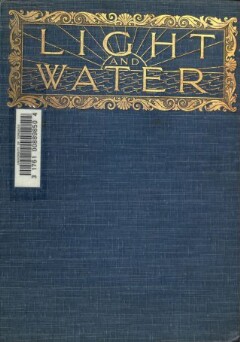Oldal 44 [44]
22 LIGHT AND WATER
is not the image of the actual rainbow before us, but of
another bow, invisible except by reflexion. As two men
looking at a rainbow do not really see the same bow, so the
bow seen by reflexion in water is a different one to that
seen in the sky. This will be evident from the diagram
opposite (Fig. 10).
Suppose a man to be standing at E, on a high cliff, with
the sun at his back and rain falling on the water before him;
and let EO represent the direction of the sun’s rays. If,
with E as apex and EO as axis, we describe a cone, of
which the angle between the generating line and the axis is
42°, we get the cone FEG, or the surface on which are the
rain-drops forming the bow which he sees. Imagine in the
midst of the falling rain a vertical plane at right angles to
his “direction of sight." The intersection of this plane with
the water is shown by the line HL, and its intersection with
the cone FEG is the ellipse ABCD (seen in perspective), of
which the arc ABC represents the actual rainbow.
In order to find the form of the reflexion as it ap¬
pears from E, we may imagine the man to be lowered in
a vertical line to a point e, as far below the surface of the
water as E is above it. Then the inversion of his view
from e will be the actual reflexion that he sees from E (see
page 12). |
If the man could look from e at the falling rain illumin¬
ated by the sunlight, he would see a totally different bow
to that which he sees from E. It will no longer be the bow
ABC, but one formed on the surface of the cone eg, the axis
of which, go, is parallel to EO. The intersection of this cone
with the vertical plane is the ellipse abcd, shown by the dot¬
ted line, of which only the portion adc is above the water.
Therefore all the bow he could see from e would be adc, and
the inversion of this, or actual reflexion as seen from E, is
akc. For if the straight line eő cuts the surface of the water
in M, then the ray 0M would be reflected along ME, and the
reflexion of 4, the summit of the smaller bow (which he can¬

